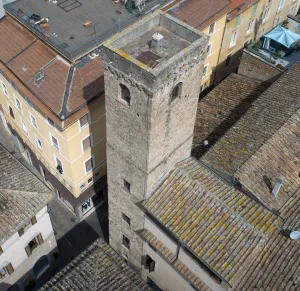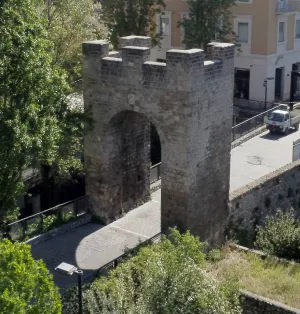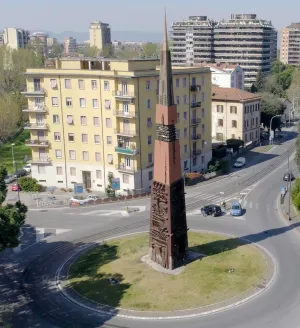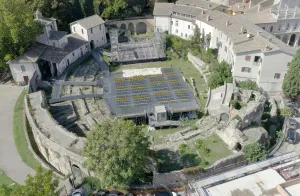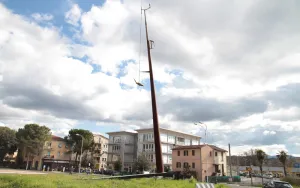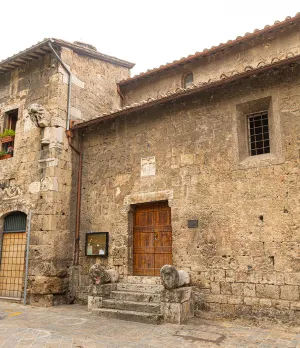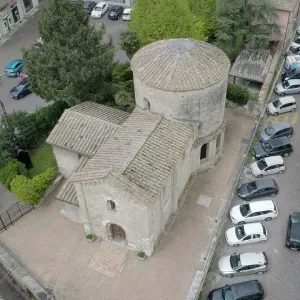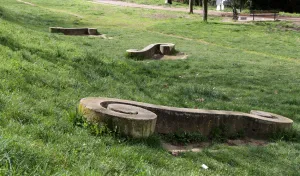The Passeggiata (public gardens)
The cathedral apse, the church of the Madonna di Carmine and above all the Roman amphitheatre are part of the gardens. In addition, pilasters, capitols and other relics from the demolished church of San Giovanni Decollato, which once overlooked Maggiore Square (now Piazza della Repubblica), have found a permanent home there, according to a practice that is certainly open to criticism. They have been reused as decorative elements and also as bases for concrete benches, small tables, seats, vases and small columns. Of particular interest are two sphinxes, one of which was defaced to make a small water fountain, that were originally used as ornaments on the sides of the church portal in Terni's main square.

Not to be forgotten are the city walls bordering the gardens on the west and south sides, where the latter section is still the best preserved of the ancient barrier of protection against enemies built in Roman times. Bone flint tools together with fragments of pottery attributable to the Palaeolithic period, have been found in the vicinity, on the outside of the Passeggiata.

A medieval Jewish cemetery was also located there, in memory of which a plaque was recently placed there and which is considered to have been quite extensive for its time: ten times the size of that of Perugia and twice as that of Pisa. It was used until the extinction of the Jewish colony in medieval Terni in the 15th century.
Interesting, though not always well maintained, is the botanical heritage that combines the essences of lindens, holm oaks and pine trees with others such as cedars of Lebanon and the Himalayas, hackberry trees, flowering ash and lope trees. Trees which very often are more than a hundred years old.
The Passeggiata public park was originally a green area at the disposal of the bishopric (the bishop’s gardens) and extended from the apse of the cathedral to the city walls.
In 1846 the vast area of land, in a state of complete abandonment, was purchased by the municipality to make it available to the community. In 1890 Domenico Giannelli oversaw its modernization and renovation. Findings from the church of San Giovanni Decollato were added in 1921 when the temple in Terni’s main square was demolished to make way for the Post Office building.
